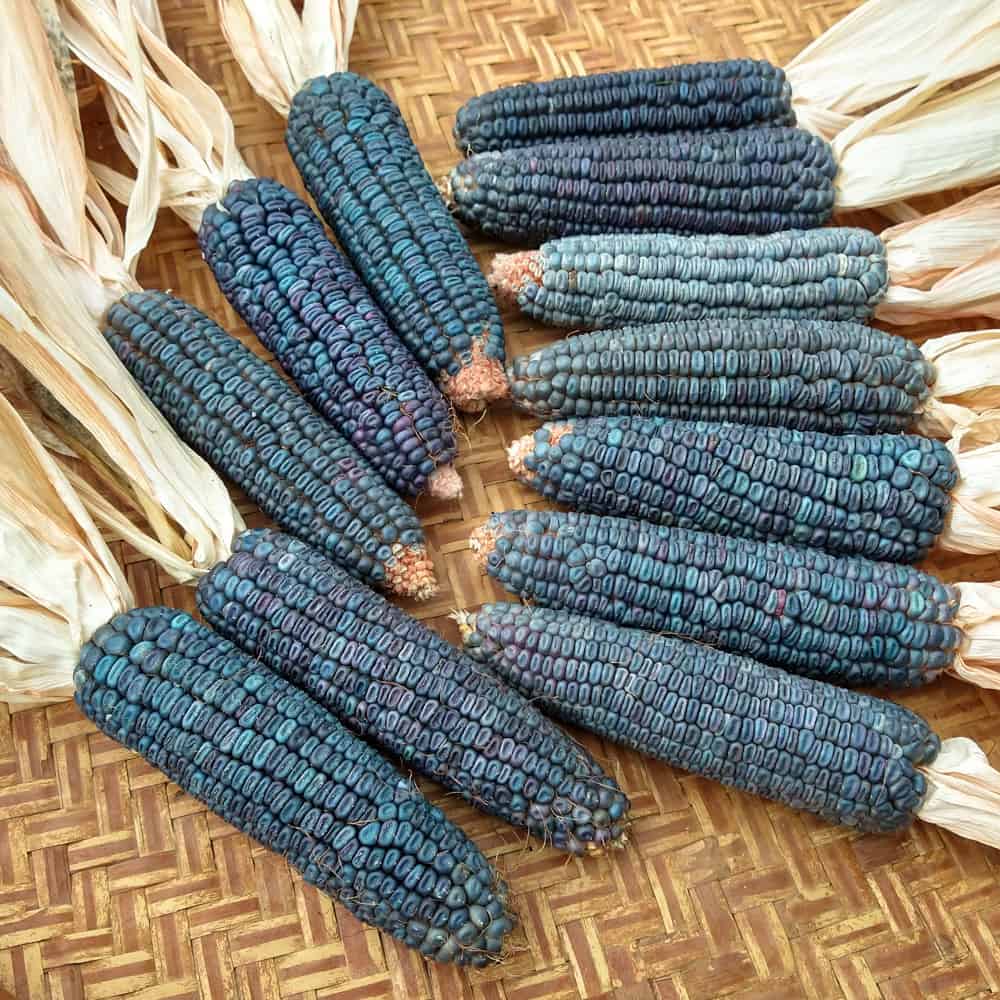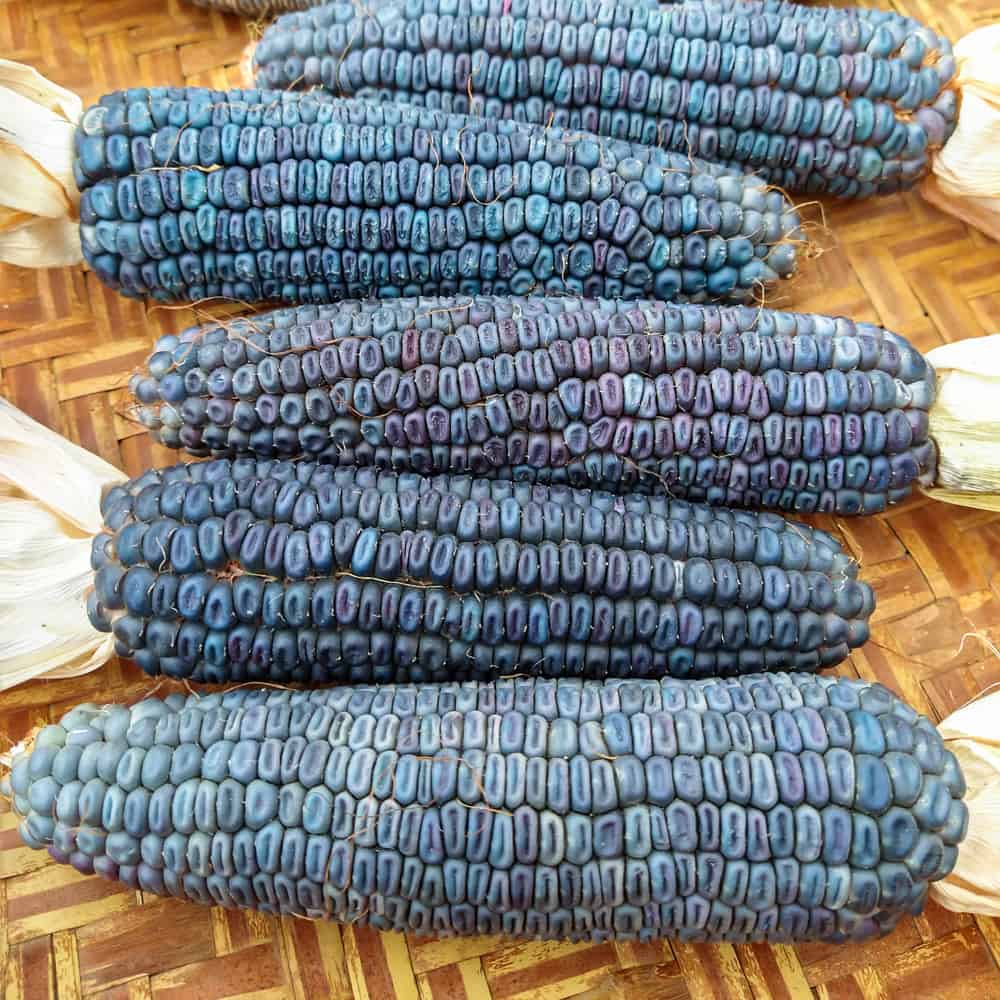Dent Corn, Strubbe’s Blue (Organic)
Zea mays. Dent. 90-100 days.
One of the most beautiful and uniquely colored corns we have seen, with single colored ears ranging from striking turquoise to bright blue to purple-blue kernels. Strubbe’s Blue Dent Corn is perfect for making your own blue tortilla masa or cornmeal for cornbread. Plants grow to about 7′ tall and produce cobs that average about 8” long. Productive and delicious, yet it is worth growing for sheer ornamental value. Ernest Strubbe began breeding a rainbow of corn varieties on his farm in western Minnesota in 1929 and later was an early member of the Seed Savers Exchange (SSE). By the 1970s, he had developed a wide color palette of unique corn lines. In an interview with SSE in 1982, he declared that the Blue Dent was “really the prettiest one in the whole bunch to my eye,” and went on to describe how it appeared in his Green Dent line in the early 1950s. He continued, “By no near means do I consider any of them a finished variety. But they are to the point now that if you plant blue seed you will get all blue, but you may get some slightly different shadings of blue. I just wish I had 20 years more to work on them.” USDA GRIN acquired Strubbe’s Blue corn in 1977. Our friend, self-described corn nut, and OSU plant breeder Lucas Nebert retrieved it from GRIN in 2021 (as ES Blue) and shared some with us in 2022. We’re so glad he did, as this corn was an instant favorite on our farm and it is also one of the best yielding corn varieties we have grown.
| Geographical Origin |
|---|
Corn does best when direct sown 1” deep, spaced at 12” centers, but can be planted as close as 8″ apart if given enough fertility. If sowing early in cold soil we recommend soaking seed overnight in water before sowing. Sow once danger of frost has passed. For optimal pollination do not plant a single row, instead plant 3-4 rows in blocks of at least 100 plants. Use row cover to protect emerging seedlings from birds and insects.
Seed Saving
Harvest cobs for grain or seed when stalks are brown and ears are dry. Fold husk back and leave indoors to finish drying completely. Remove kernels by rubbing two cobs together, or by hand. Test for dryness with a hammer; dry kernels shatter. Isolate from other corn by distance –1 mile – or time, two weeks – between sowings.





What others are saying
There are no contributions yet.